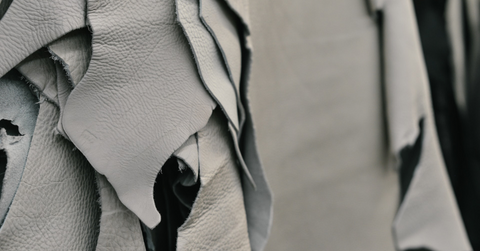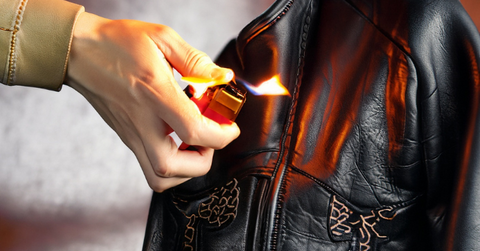Leather is a classic material that embodies luxury and craftsmanship. Whether you’re buying a jacket, wallet, or sofa, it’s crucial to distinguish genuine lambskin leather from faux alternatives. Real leather is durable, textured, and ages beautifully. To help you avoid being fooled by synthetics, here’s how to tell real leather from fake.

Understanding Leather: Real vs. Fake
The table below highlights the key characteristics of genuine leather and faux leather.
| Feature | Real Leather | Fake Leather (Faux, PU, or Vegan) |
|---|---|---|
| Material | Animal hide (cow, goat, buffalo, etc.) | Synthetics such as polyurethane (PU) or polyvinyl chloride (PVC) |
| Texture | Natural, uneven grain with imperfections | Perfectly smooth and uniform |
| Smell | Rich, earthy, leathery scent | Chemical or plastic‑like odor |
| Durability | Lasts decades; develops a beautiful patina | Prone to peeling or cracking over time |
| Breathability | Breathable | Non‑breathable; can feel hot or sticky |
| Water Resistance | Absorbs some water (not waterproof) | Surface is water‑resistant |
| Eco‑Friendliness | Biodegradable, but animal‑based | Vegan‑friendly, yet plastic‑based and non‑biodegradable |
| Maintenance | Requires occasional conditioning | Easy to clean but irreparable once damaged |
| Price | Generally expensive | Cheaper and widely available |
Determining If Leather Is Real or Fake
Use the following tests to verify leather authenticity:
Visual Inspection: The Look of Real Leather
Real leather shows distinctive grain patterns—cowhide is often coarse and pebbly, while lamb or goat leather is finer. Faux leather looks unnaturally uniform.
The Touch Test: How Real Leather Feels
Genuine leather is supple and flexible; pressing it creates creases and wrinkles. Fake leather feels smooth and unchanging.
The Smell Test: Leather’s Unique Scent
Authentic leather has a rich, earthy aroma. A chemical or plastic smell indicates synthetic material.

Flame Test (Use with Caution)
On a small, hidden piece, apply a flame briefly. Real leather smoulders and smells like burnt hair; faux leather ignites quickly with a strong chemical odor.

Water Absorption Test
Place a drop of water on an inconspicuous area. Real leather absorbs moisture and darkens; faux leather causes water to bead.
The Bend Test
Fold the leather gently. Genuine leather shows wrinkles and slight color shifts, while faux leather stays flat and unchanged.
Pricing Clues
Real leather is a premium material. Extremely low prices often signal faux leather, though genuine sales do occur.
Frequently Asked Questions
How can you tell if something is 100% leather?
Combine touch, smell, grain inspection, and the water test. Labels or manufacturer details also help confirm authenticity.
How can you tell the quality of leather?
Quality depends on leather type (full‑grain, top‑grain, genuine, bonded), tanning process, and craftsmanship. High‑grade leather has a natural grain, is durable, and develops patina.
Which leather is pure?
Full‑grain leather is considered the purest; it retains the complete grain and imperfections of the hide.
Does 100% leather mean real leather?
Yes, but the grade matters. Full‑grain is highest quality, whereas “genuine” or bonded leather is lower grade despite being real.
Final Thoughts
Identifying real leather is a valuable skill. By using visual, tactile, and simple at‑home tests, you can confidently distinguish genuine leather from synthetics and make informed purchases.
